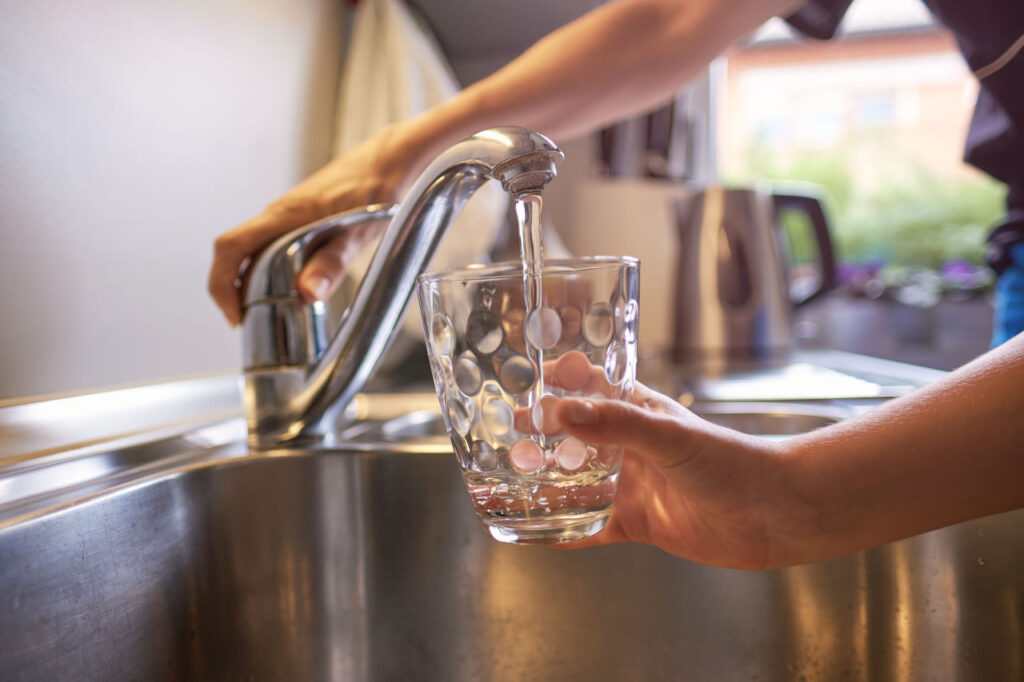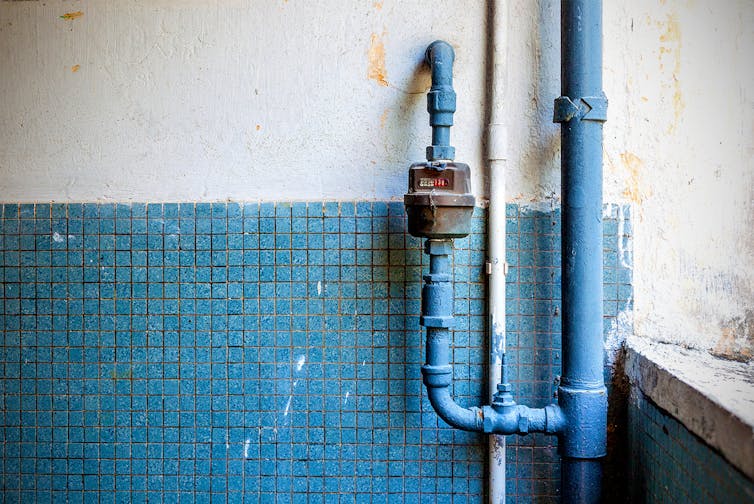How water is treated to make it drinkable
In France, two-thirds ofdrinking water is collected from groundwater, also known as aquifers. The remaining third comes from surface water (rivers, lakes, dams), also known as "surface water." Once collected, the water is then transported to a treatment plant to be treated.
Julie Mendret, University of Montpellier and Alice Schmitt, University of Montpellier

The treatment applied depends on the initial quality of the water collected, which generally depends on the location of the collection point; it should be noted that surface water usually requires more extensive treatment than groundwater.
Until now, for groundwater, simple physical treatment (filtration and settling) and disinfection were sufficient in most cases.
For surface water, a more extensive process was required, combining physical and chemical treatment, disinfection, and, in 25% of cases, a refinement treatment (using activated carbon or membranes) to remove residual organic matter and improve the organoleptic qualities of the water (its taste, smell, and clarity).
Raw water contains various pollutants that must be removed. Organic matter, which comes from the decomposition of living matter (animal waste, dead animals, decomposing plant fragments, etc.), is the main pollutant found in water. The aim is to remove it before more specific pollutants, such as pesticides or pathogens.
First remove the largest pieces of waste
The water first passes through screens (known as "screening") to remove the largest debris. It then undergoes sieving to remove smaller debris, such as sand.
Then, a coagulation/flocculation stage takes place, whereby a coagulant is added to create flocs, i.e., clusters of suspended matter that then sink due to their weight and are eliminated in the sludge.
This sludge, which is the solid part produced during treatment, is mainly used in agriculture as a soil conditioner by spreading.
Then treat the invisible particles
Filtration using activated carbon or sand is then carried out to remove any particles invisible to the naked eye that may still be present. In some cases, membranes, which act as a specific filter that allows water to pass through while retaining suspended solids and other substances, can be used instead of activated carbon.
Only membranes that comply withthe decree of June 22, 2012, which guarantees their safety and, in particular, the conformity of the material, may be used in the production of water intended for human consumption.
[Nearly 80,000 readers trust The Conversation newsletter to help them better understand the world's major issues. Subscribe today]
A disinfection stage then takes place to eliminate pathogenic microorganisms, often through the addition of ozone. A refinement treatment (adsorption on activated carbon) may then be carried out to eliminate residual organic matter and improve the organoleptic quality of the water.
Finally, chlorine is added for its residual effect, which has a long-lasting disinfectant effect, allowing water to remain in excellent condition while it is stored in reservoirs (water towers) and until it is distributed.
This chlorination process, which has been used in France for over a century for its disinfecting and residual effects, has been extended since 2003 to most water networks in France. This follows a request from the authorities to protect these networks from potential terrorist attacks: in the event of intentional contamination, any toxic or biological agent introduced would be destroyed by the action of chlorine.
At the same time, an abnormal and rapid drop in chlorine levels resulting from malicious activity in the water network would enable the operator to detect this potential intrusion.
What are the effects on human health?
Aluminum salts, including aluminum sulfate, are sometimes used in surface water treatment as flocculants and clarifiers to remove dissolved organic matter and suspended particles. Occasionally, the pH of the water is not properly controlled during this stage, leading to aluminum leaching into tap water.
Studies in humans have highlighted possible links between aluminum intake and diseases of the nervous system.
In a 2003 report, ANSES stated that the available epidemiological and physiological data did not allow aluminum to be attributed an etiological role in Alzheimer's disease. Furthermore, exposure to aluminum through drinking water probably accounts for less than 5% of the French population's daily dietary intake of aluminum.
The ozonation stage, used to eliminate microorganisms and act on micropollutants such as pharmaceuticals, leads to the production of potentially toxic by-products. One example is bromates, which form during the ozonation of water containing bromides and are identified as probable carcinogens.
The case of chlorine
The use of chlorine in water treatment can also lead to the production of suspected carcinogenic byproducts, such as trihalomethanes, haloacetic acids, and haloacetonitriles.
Some of them have been regulated for several years at the point of use, i.e., at the tap, such as trihalomethanes.
The frequency of inspections varies from once every 10 years for the smallest production stations to once a month for the largest ones.
Recently, European Directive 2020/2184 imposed the monitoring of chlorites, chlorates, or haloacetic acids by 2026 in the case of disinfection treatments that may lead to their production, particularly when using chlorine dioxide.
Models have been developed to anticipate the production of these compounds and to better understand how to limit or even eliminate them entirely, but the complexity of the mechanisms involved and the number of variables to be taken into account are such that they still present considerable uncertainties.
Until more is known about this subject, the key is to limit the amount of residual chlorine as much as possible (while keeping enough to ensure high-quality water up to the point of distribution) in order to prevent the formation of these by-products.
The problem with the pipes
At the outlet of the water treatment plant, adding a new treatment if necessary, the objective will be to obtain water that is close tocalcium-carbonate equilibrium, i.e., non-aggressive and very slightly scaling.
Hard water will cause limescale to precipitate, leading to the build-up of limescale in household appliances. Aggressive water can corrode the metals used in pipes, leading to contamination, for example with lead, during water transport. This phenomenon occurs mainly when water stagnates in pipes.

With regard to lead, the solution for permanently eliminating it from water is to remove lead pipes. Public authorities have launched programs to replace public lead connections in order to deliver water that complies with European Directive 98/83/EC (of November 3, 1998, revised in 2013), which sets a maximum lead content at the tap of 10 µg/l.
Turning on the tap and getting drinking water, a seemingly trivial everyday action that requires a whole series of upstream treatments.
Julie Mendret, Senior Lecturer, HDR, University of Montpellier and Alice Schmitt, Postdoctoral researcher in process engineering, European Institute of Membranes, University of Montpellier
This article is republished from The Conversation under a Creative Commons license. Readthe original article.